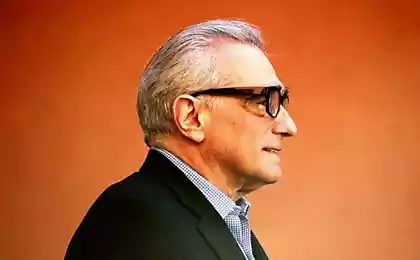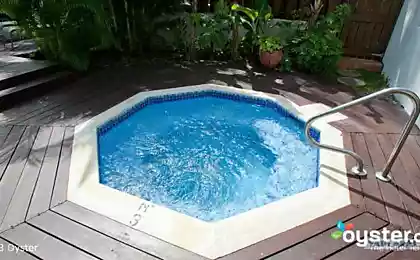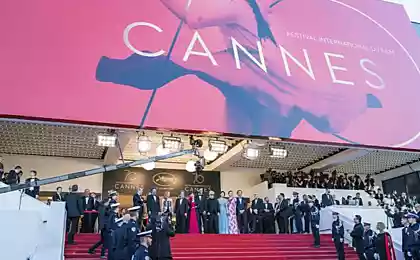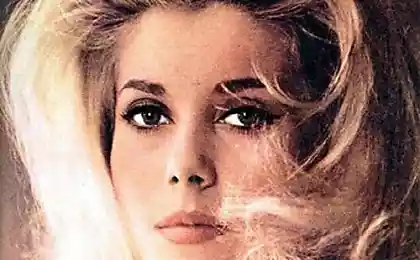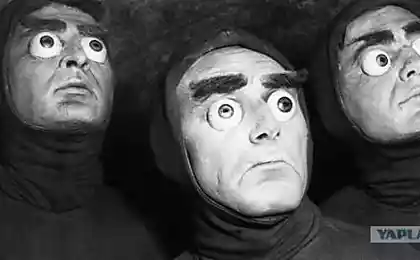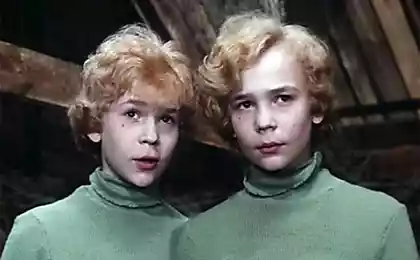658
Movies and reality: how the lumière brothers first have erased that line?
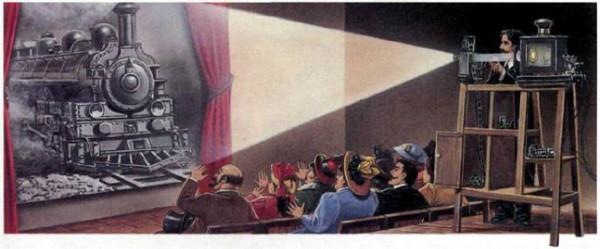
It has been 152 years since the birth of one of the lumière brothers — Louis Jean Lumiere. The lumière brothers are known as the inventors of cinema and the pioneers of the French film directing, but the list of their achievements does not end there. First they made a technology black-and-white photographs available for fans, while it could afford only to professionals, and then repeated the success with color photography.
Experiments in creating moving images was conducted prior to the first paid movie show, held in 1895. However, brothers of Lumiere first built the machine, allowing not only to capture on film the event lasting just over 50 seconds, but also to project the footage on the screen. The device Lumiere was easy and convenient, therefore, patented in February 1895, the name "the cinema" has opened a whole era of film in art.
Fundamentals of mass cinema
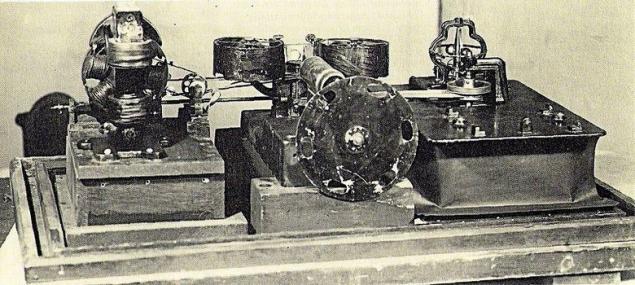
Kinetoscope — an apparatus for recording moving images on film
To the Lumière moving pictures were shown phenakistiscope Joseph Plateau (1829), Zoetrope William George Horner (1833) and zoopraksiskop Edward Meybridzha (1879). Faster the progress Thomas Edison, who presented in 1889-1891 years the kinetoscope and the peep show machines for recording and playback of moving images. But this technique had a big disadvantage — on the peep show, only one person could watch the film through the eyepiece, while Louis Jean has created a device that shows movies on the big screen.
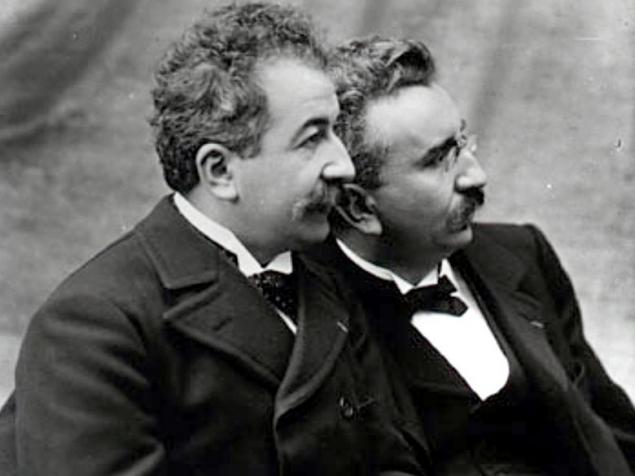
Inventive Louis skills developed by studying at an industrial school, while helping his father at the factory of photographic materials. In 1895, Louis invented the movie camera for shooting and projection of "moving pictures", suitable for commercial use. Then he patented the device and called it "cinema". The device represented an improvement over edisonoside "kinetoscope". Frame rate shooting and the show was 15 frames per second. At this frequency the length of the movie, fit on a standard reel of 35 mm film, was 40-50 seconds.
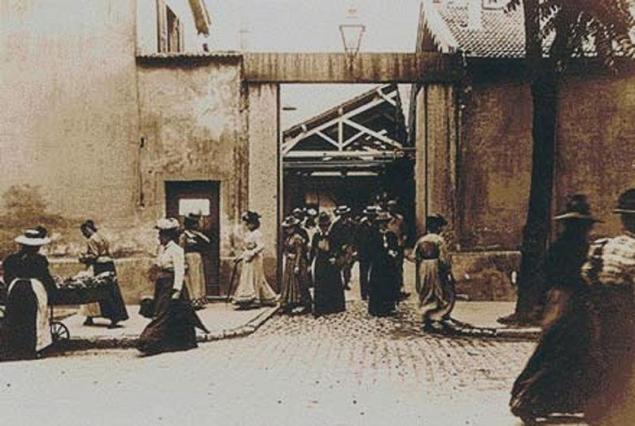
Workers exiting the factory
The brothers of Lumiere brothers — Auguste Marie Louis Nicolas and Louis Jean began to work together. While Louis was engaged in the technical side of cinema and inventiveness, Auguste has served as an organizer and Manager. And already on December 28 1895 they were able to organize in a cellar of "Gran of cafe" the first paid public session on the Boulevard des Capucines in Paris. The brothers showed scenes mostly shot on location: "the workers exiting the factory, Lumiere brothers", "Breakfast baby", "Catching red fish", "Vaulting", a staged Comedy sketch "the sprinkler sprinkled" and others.
The Cinematheque was designed to show all features of its "cinema": home photography, art photography and reportage. And some films were conceived as the promo video of the new technology. "Quit working" demonstrated the solidity of the Lumiere factory, and the "delegates left the hall" was filmed on the eve of the show, and the audience could see themselves on the screen so the brothers of Lumiere showed the speed of the film-making process. The special advantage of the "film" is shot on location, and on the street in daylight. The film was able very quickly to prepare the view and show not a single spectator, and the whole audience. The technology of the lumière brothers for the first time in the history of the capture on tape life in all its manifestations.
At the entrance of the lumière brothers took one franc. The proceeds from this session amounted to 35 francs. The famous film "Arrival of a train at the station of La Ciotat", contrary to popular belief, was not represented at the session. Her show was held in January of the same year.
In the spring of 1896 the lumière brothers showed their film at the Paris exposition and was recognized by the inventors of cinema. After that, they went on a world tour, visiting London, new York, Bombay, contributing to the spread of the cinema throughout Europe.
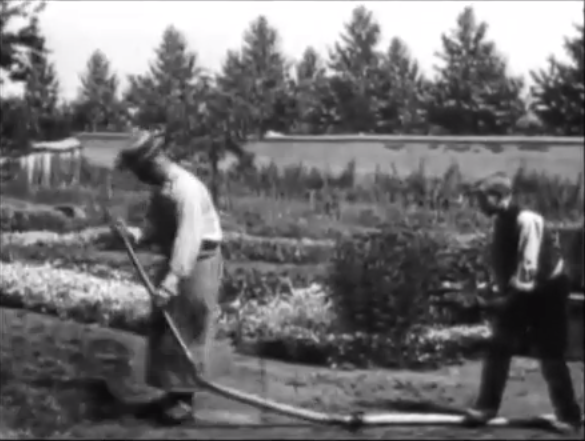
"The sprinkler sprinkled" — the world's first Comedy
Together with the advent of mass film industry and new film language. The lumière brothers shot with a smoothly moving platform (gondola) a film about Venice. Now this technique is called "travelingmom". They filmed his first newsreel ("Arrival of delegates to forocongreso in Lyon", 1895) and the first feature film ("the sprinkler sprinkled", 1895).
The speed of rotation of the handle of the camera affect the effect of Comedy or drama; there are different ways of installation, and to cheer the audience, the rollers were shown backwards. The first "ceremonial" scenes of the coronation ceremony, official receptions and technique of shooting is not very different from modern television.
Since 1898 Louis was engaged only in the manufacture of film equipment and film, then sold the patents, and continued his experiments in the field of three-dimensional and Technicolor.
"Autochrom" Louis Lumière

In 1903, Louis continued his discoveries in another area of photography. He managed to patent a method of producing color photo — "Autochrom", which was used until 1935. Autochrome — the first mass production technology of color photography. Autochrome consisted of a glass plate, on which was applied a layer of varnish. The layer of varnish was coated with a layer of starch consists of microscopic granules, colored red, green and blue, the space between the granules were sealed with black soot. The granules are employed as color filters. Then the colored layer covered with a protective layer and black-and-white emulsion.
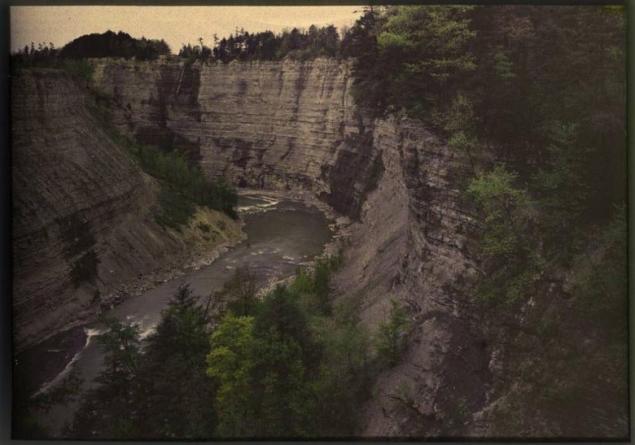
One of the first avtonomnykh pictures
In Autochrome the main image was black and white, and a layer of colored granules when viewed in the light turned black and white image in color. In 1907 Louis optimizes and launches industrial production of such plates. Every day began to produce about 6,000 plates, allowing even Amateurs to do color photos in a simple way. The company Louis was one of Europe's largest manufacturers of photographic to 60-ies of XX century.
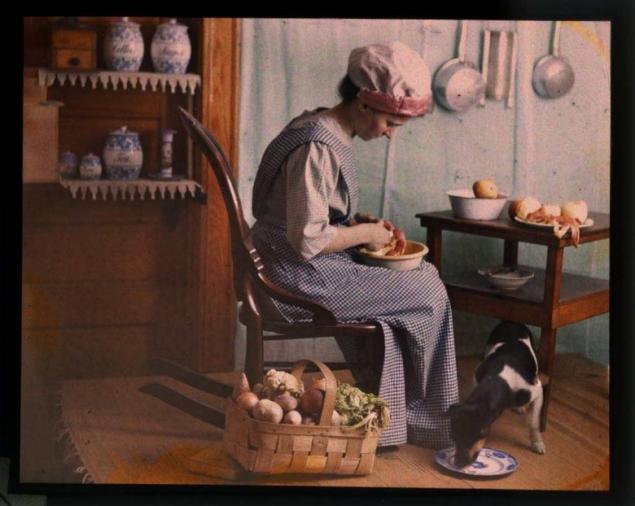
From the point of view of perception, the images obtained with the help of technology Autochrom look like a fusion of photography and painting, at the expense of visible granules of starch. The approach to painting is noticeable for static images, due to the fact that the plate is not sensitive enough.
The arrival of the train at the station of La Ciotat
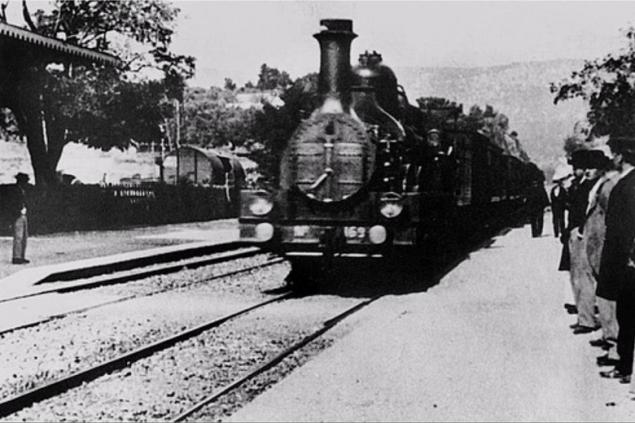
One of the most famous shots in film
Screening of short film "arrival of a train at the station of La Ciotat" was the most spectacular careers in the history of the lumière brothers. It took place in January 1896, and caused an uproar: the audience in a panic ran to the side of moving them from the screen of the train. "Revived" the image of the train was caught off guard psychologically unprepared spectators.
The plot was mundane: on the screen there was a train stop at the railway platform of the station of La Ciotat and along the carriages strolled by the passengers. The effect of the "reality" of a moving train is achieved by the movement in the long term, which the lumière brothers showed the first time in history on a flat screen. Train life-size appeared from afar, passed obliquely from right to left across the screen to the fore and left of the left edge of the screen, creating a sense of space. One of the most important expressive means of the film was a continuous transition from the General to the medium and large plans when a stationary camera.
This film was first shown shooting people overall, medium and closeup. Passengers are asked to arrive by train, were friends and relatives of the Lumiere brothers. Because of this, the film is erroneously called the world's first production film. But it was ahead of "political waterer", which premiered on 9 days earlier.
In our time, the film "arrival of a train" was included in the list of "Most terrible scenes of cinema" version of the site Filmsite.org.
Movie and virtuality
Watching the movie, we perceive the events on the screen is very real, but always realize that they are participants in the perception of works of art, not real events. This face more clearly manifested than more rapidly developed and distributed movie. It is difficult to imagine that a moving train on the screen would cause us to flee in fear to the side, but the train Lumiere has forced the audience to experience just that. Then the train was seen is real and not "virtual". The movie was not massively widespread and the public has not formed a steady perception of the film as a different reality.
What was the train of Lumiere for the French public of the nineteenth century, for us is virtual reality. It creates a specific environment using computer graphics and allows the participant to be immersed in this environment and act in it.
Unlike the movie, the virtual world is not aimed at depicting life and its free modeling. This can be represented as a series of lives of human beings actively using all the senses and ways of responding to external stimuli. He can use the "transmigration of souls" and transform into anyone. But for such a transformation, oddly enough, it is very important the awareness of the party's own "I" to remain a certain distance between "I" and the real "I" virtual. Then the person receives the necessary aesthetic experience from virtual reality.
Conclusion
Probably everyone, at times, wanted to be in the atmosphere for a particular film, to be not only observer, but an active participant. To create a suitable character, which, perhaps, would not be similar to the real "I".
The movie allowed us to create and observe a different reality in real time, plunging into her perception. Virtuality has given us a very different perspective — the perspective of the realizations of our dreams about reincarnation and the desire to be "in another place and at another time". With the advancement of technology, the degree of our immersion in this reality will continue to grow.
To the intersection of cinema and virtuality we came their way. In honor of the 18th anniversary of the company we are launching in the Moscow office Gear VR cinema. Virtual reality is created based on the technology of Samsung Gear VR, which allows you to watch videos in 3D 360 degrees.
15, 16 and 17 October, Gear VR cinema will be open to everyone by appointment. Sign up for a session here: Saturday (day 18 Mail.Ru Group), Sunday, Monday.
While this is only a non-profit experiment, for the short user session. Broadcast in the cinema we movie on his own script. What is it about? Surprise! Get ready to travel into the future city on the planet Elion.
Source: geektimes.ru/company/mailru/blog/281390/
Modern kindergarten in China
The magnetic memory of the future. Terahertz radiation used for ultrafast overwrite spins
